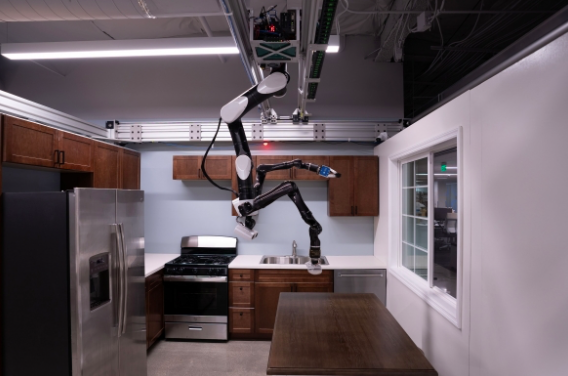
The use of robots in factories is now the norm, but the same cannot be said in the home, where movement patterns are less predictable. As society ages this could change.
The UN has predicted that by 2050 over 1.5 billion people will be over 65, more than doubling from the figure today. With this in mind, the Toyota Research Institute (TRI) in California has been quietly working away to develop helper robots to enable older people to stay independent for longer. The company is currently building a mock home at its Los Altos HQ complete with a kitchen, dining area and bathroom. Items can be moved around to test ideas on different interior lay outs.
The philosophy is based on what the scientists call Intelligence Amplification (IA), using the tech to aid the humans by amplifying their ability. It’s based on the Japanese idea of Ikigai, defined as every person’s life should have meaning and purpose. Gill Pratt, CEO of TRI explained, “Studies of Ikigai teach us that we feel most fulfilled when our lives incorporate work that we love and that helps society. To enable more people to achieve their Ikigai, TRI is pursuing new forms of ‘automation with a human touch’ (called Jidoka in the Toyota Production System) to develop capabilities that amplify, rather than replace, human ability with the goal of bringing deep happiness and fulfilment to all people.”
Max Bajracharya, VP of Robotics added, “TRI robotics research is focused on the home because it is in that environment that robots can provide the greatest assistance in achieving human fulfilment. It is also one of the most complex environments for robots to master. Our work is focused on two key challenges: teaching robots from human behaviour and using simulation to both train and validate robot behaviours. Collectively, we think of this idea as fleet learning, where when one machine learns something, they all learn something. We believe this is going to be the key to making robots in human environments practical.”
Several interesting ideas are being trialled, including a ceiling-mounted ‘gantry robot’ which would swoop down to load a dishwasher, wipe surfaces or clear clutter. It would simply fold away when not in use. Also soft grippers have been examined, which could also have industrial uses.
Where emotions come in to this
The team has also considered what is beneficial and what may not be. Steffi Paepcke, a TRI User Experience Team Lead said, “We rely heavily on observational research techniques such as contextual inquiries. Before Covid-19, we went to Japan to work with our research partners to visit the homes of older adults and observe them going about their daily lives, making note of friction points, challenges and opportunities. We observed that cooking is a beloved activity for many, though it can get more strenuous over time. Sharing meals and feeding loved ones also can serve as a focal point for social connection, so giving elderly people a fully automated cooking robot or pre-cooked meals might be physically beneficial but emotionally detrimental.”
The researchers hope the project will translate into consumer products one day.
